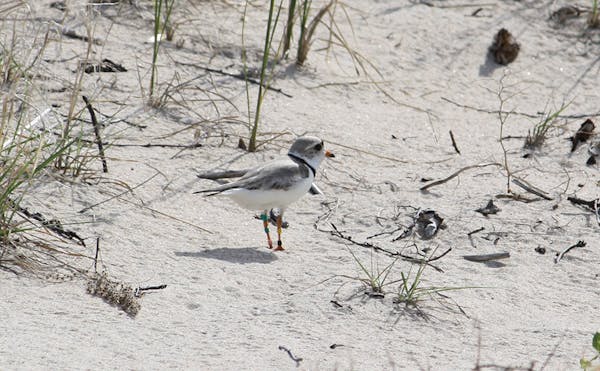David Palmquist, a volunteer rattlesnake remover, chuckled about his uncommon citizen stewardship.
"My wife's cellphone has four different numbers for an esteemed toxicologist up in the Twin Cities just in case something goes wrong, " he said, wryly. "Nothing ever has, but they're good numbers to have."
David and Kathy Palmquist are among many Minnesotans whose uncommon actions benefit uncommon species. Residents of Winona, they are part of a southeastern Minnesota timber rattlesnake responder network that aims to sustain a state threatened species that as recently as 1989 could be killed for a government-paid bounty.
"We get calls from the law enforcement center only a few times a year," said the former state park naturalist. "But that's not surprising. Rattlesnakes are rarely seen in Winona County."
Many Minnesota plant and animal species are rarely seen. Currently, more than 500 species are listed as endangered, threatened or of special concern by the state's Department of Natural Resources. The primary reason is habitat loss. Other common causes are exploitation, pollution, disease, persecution, invasive species competition or species simply living on the edge of their range.
Rich Baker, DNR endangered species coordinator, said uncommon species can and do benefit from actions of citizens inspired to act. "Not long ago it was 'see a snake; kill a snake.' Thanks to a network of citizen responders, the relatively few timber rattlesnakes that do exist in Minnesota have a better chance of survival."
Like the Palmquists, Dick Doll of Rockville, Minn., has a singular interest in a rare species. He has evolved into one of the state's leading citizen scientists on the purple martin, a Minnesota species of special concern that has experienced a significant national population decline. Today, martins depend almost entirely on human-made birdhouses. The bird's population decline appears to be linked to competition from exotic cavity-nesting birds, predation and lack of good nesting sites.
"As a kid growing up in the Richmond area, I always saw and enjoyed martins," Doll said. "Later, when I had property of my own in the Willmar area, I started a colony to see and enjoy them again."
Doll has helped martins in a variety of ways over the past 18 years. He has erected huge martin houses and tended to each brood by regularly removing parasites from nests. He has helped capture and band martins so scientists can learn their local and international movements. He has used spotting scopes to record and report martin band numbers to a network of avian scientists. And he has helped many others learn how to protect a bird that spends much of its life in Latin America, yet migrates 7,000 miles to Minnesota each spring to raise a single brood over the harassment of pesky egg-breaking sparrows and patient hawks that view martin houses as neighborhood restaurants.
Though citizen actions have helped some uncommon species, the future for others is unclear. The jury is still out for Minnesota's threatened wood turtle. It could rebound, decline, or stay the same. The jury appears to have ruled on the piping plover, a shorebird that has struggled to exist in the far northeast.
"Minnesota's plovers last nested in Minnesota two years ago despite our best efforts," said Christine Herwig, DNR nongame specialist at Bemidji.
Baker said the biggest challenge for uncommon species is "getting ahead of the curve and reacting in time." He called the current massive reduction in monarch butterflies a perfect example. Nationally, monarch numbers have dropped 90 percent from their population highs in the mid-1990s, according to the U.S. Fish and Wildlife Service. Most scientists believe this is due to genetic and chemical agricultural advancements that produce nearly weed-free fields of corn and soybean. Milkweed is the only plant monarchs use during their larval stage.
"We all see the curve," Baker said. "The question is, can we get ahead of it?"
Laura Molenaar of New London, Minn., has taken aim at that curve. A fifth-grade science teacher, she and her middle school students participate each year in the national Monarch Larva Monitoring Project.
"It's authentic research with a purpose," she said. "Students follow scientific protocols and report their monitoring results to scientists who truly use our data. It's incredibly cool."
Molenaar will lead students on weekly field trips this summer to search for monarch eggs on the leaves of milkweed plants. They will inspect about 100 randomly selected plants at three sites. "Students focus on the monarch but what they learn is the interconnectedness of nature," she said.
Later, Molenaar's students will collect milkweed seeds and other forbs and grasses, and plant them in a restored prairie on school property. "That's when kids get to be buffaloes," she said. "They toss their seeds on the snow and stomp on them like the buffalo once did."
This uncommon act, she said, is a lesson in itself. "It shares the idea that you don't have to be a certified expert to make a difference … you can be a 10-year-old and make a difference."
C.B. Bylander is a freelance writer. He lives near Baxter, Minn.
